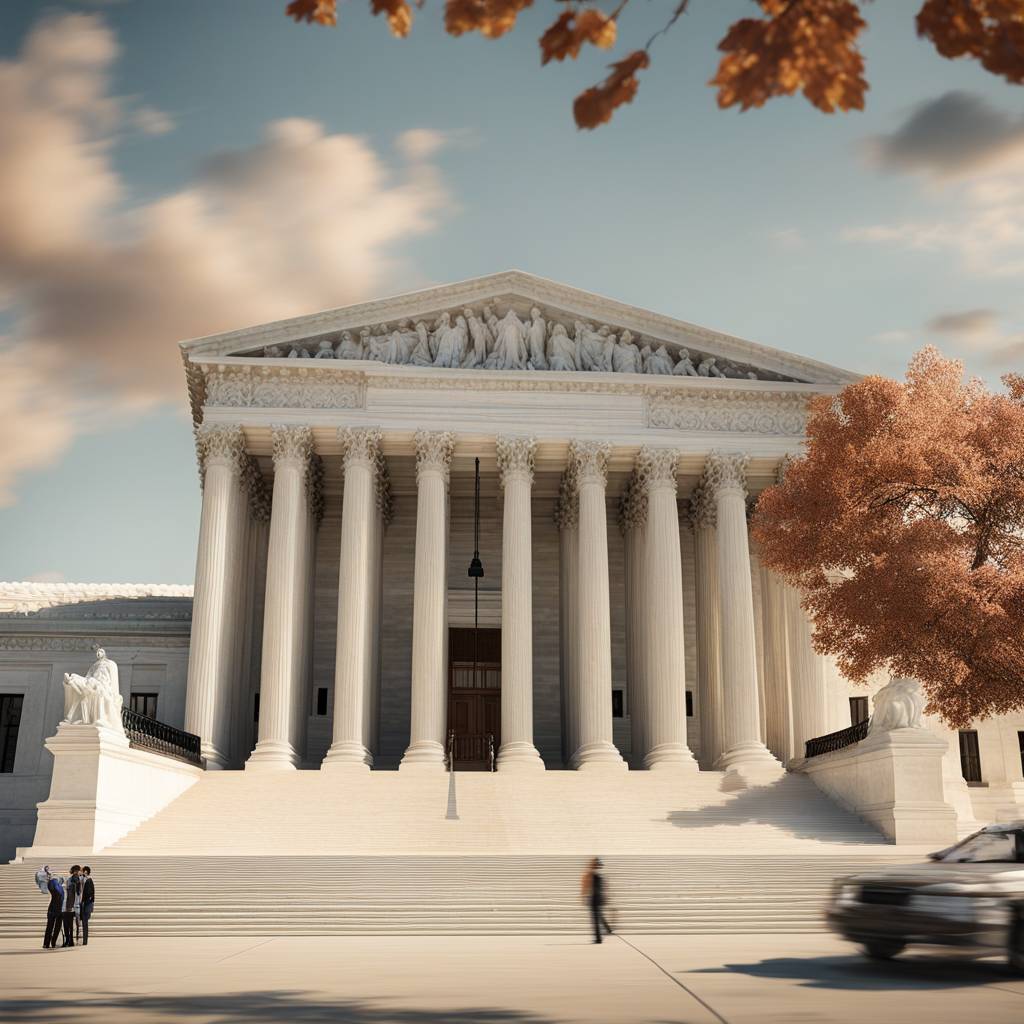As the Supreme Court prepares to address a set of politically charged disputes in its final arguments this month, it is confronting a backlog of contentious issues involving guns, elections, and transgender rights. These cases will place the court’s conservative majority in the midst of another volatile presidential contest. Upcoming arguments will involve whether former President Donald Trump can claim immunity from criminal prosecution, as well as a clash between President Joe Biden and Idaho regarding abortion rights. The high court is facing a busy term with fewer opinions issued compared to previous years.
This term, the Supreme Court has only issued opinions in 22% of its argued cases, a decrease from previous years. This slow pace may lead to a shorter timeframe with potentially impactful decisions being issued closer to the November election. Dean Erwin Chemerinsky noted that delays in decisions may be due to the complexity and significance of the cases as well as the deep divisions among the justices. The slower pace could have a significant impact this year, particularly in cases involving Trump’s assertion of immunity from election subversion charges.
The court’s delays are not limited to this term, as last year’s pace of opinions also fell sharply. Speculation arose that a leak of the court’s draft opinion on Roe v. Wade may have been a factor in the slowdown. The court faced criticism for its handling of divisive emergency appeals and high-profile cases involving Trump. Despite the delays, the court is set to hear arguments on a range of issues including abortion rights, gun possession, and the Capitol riot.
The Supreme Court is set to address a federal law requiring hospitals to provide an abortion in states with strict bans, the use of a federal obstruction law in prosecuting Capitol rioters, and ongoing disputes over immigration laws in Texas. Emergency cases have taken up valuable resources and time, drawing increased criticism in recent years. The court faces pressure to manage its workload more efficiently to avoid these delays and distractions from its regular docket.
Despite criticism of its slow pace, the Supreme Court has historically moved at its own speed with little incentive to rush decisions. The court has shown quick resolution on some cases this year, but overall, the trend is towards slower decision-making and a reduction in the number of cases taken. Court watchers speculate on reasons for the delays, but ultimately, the impact on the practical outcome of cases is minimal. Justices may choose to take more time to craft well-thought-out opinions, leading to a more deliberate and thorough decision-making process.


